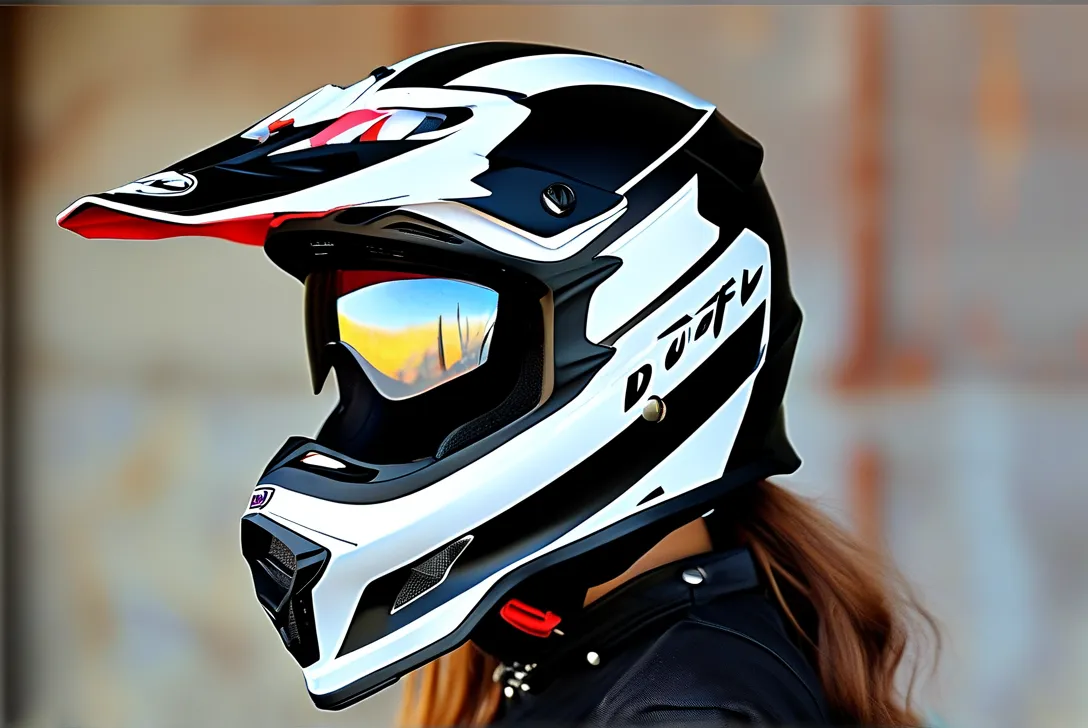Riding a motorcycle demands more than skill and confidence—it requires gear that prioritizes safety without compromising comfort. Among the essential pieces of equipment, a DOT full face helmet stands out as a critical investment. These helmets meet rigorous Department of Transportation (DOT) safety standards, ensuring they can withstand high-impact collisions. But with countless options on the market, how do you choose one that balances protection, ventilation, and usability? This guide breaks down the key factors to consider and highlights top-rated DOT-certified helmets designed for optimal airflow.
Why DOT Certification Matters for Motorcycle Helmets
DOT certification isn’t just a sticker—it’s a guarantee that a helmet has passed stringent impact absorption, penetration resistance, and retention system tests. According to the National Highway Traffic Safety Administration (NHTSA), helmets reduce the risk of fatal head injuries by 37% for riders and 41% for passengers. Full face designs provide comprehensive coverage, protecting the jaw, chin, and face—areas vulnerable in crashes. When shopping, look for the DOT FMVSS No. 218 label to ensure compliance.
The Role of Ventilation in Helmet Safety
A well-ventilated helmet does more than keep you cool—it prevents fogging, reduces fatigue, and enhances focus during long rides. Modern DOT full face helmets feature advanced airflow systems, including:
– Multi-channel intakes and exhaust vents: Direct air over the scalp and out the rear.
– Moisture-wicking liners: Combat sweat buildup in high-temperature conditions.
– Adjustable vent controls: Customize airflow based on weather or riding intensity.
A study by the Motorcycle Safety Foundation (MSF) found that riders with proper ventilation reported 22% less heat-related distraction compared to those using non-ventilated helmets.
Top 5 DOT-Certified Full Face Helmets with Superior Ventilation
-
Bell Qualifier DLX MIPS
– Key features: Velocity Flow Ventilation, MIPS brain protection system, Transitions shield.
– Why it stands out: Aerodynamic design reduces wind noise while maintaining airflow efficiency. -
HJC i90
– Key features: ACS (Advanced Channeling Ventilation System), removable/washable liner.
– Why it stands out: Lightweight polycarbonate shell with 13 intake/exhaust vents for all-day comfort. -
ScorpionEXO Covert X
– Key features: Flip-up modular design, Ellip-Tec II ratchet system, AirFit inflatable cheek pads.
– Why it stands out: Combines full-face protection with modular convenience and adjustable airflow. -
Shoei RF-1400
– Key features: 3D center pad system, Shell Shape Optimizer technology.
– Why it stands out: Premium aerodynamic performance with minimal drag and maximum ventilation. -
LS2 Stream EVO
– Key features: Kinetic Polymer Alloy (KPA) shell, RapidFire shield replacement system.
– Why it stands out: Budget-friendly option with 12 ventilation ports and emergency release cheek pads.
How to Ensure a Perfect Fit
A DOT-certified helmet only works if it fits correctly. Follow these steps:
1. Measure your head circumference at the widest point above your eyebrows.
2. Check the manufacturer’s sizing chart—sizes vary between brands.
3. Test the helmet by shaking your head side-to-side; it should stay firmly in place without pressure points.
4. Verify that the cheek pads snugly contact your face without restricting breathing.
Pro tip: Replace your helmet every 5 years or immediately after a crash, as materials degrade over time even if damage isn’t visible (Snell Memorial Foundation).
Maintenance Tips for Longevity
- Clean vents monthly with compressed air to prevent clogging from dust or debris.
- Use mild soap and water for interior liners—avoid harsh chemicals that weaken EPS foam.
- Store the helmet in a cool, dry place away from direct sunlight to preserve structural integrity.
FAQs About DOT Full Face Helmets
Q: Are DOT helmets safe enough for highway speeds?
A: Yes—DOT standards simulate impacts at speeds up to 70 mph (FMVSS No. 218). However, pairing DOT certification with Snell or ECE ratings adds an extra layer of assurance for high-speed riding.
Q: Can I add aftermarket vents to my helmet?
A: Modifying a helmet voids its certification and compromises safety. Always choose a model with built-in ventilation suited to your needs.
Q: How do I test a helmet’s ventilation before buying?
A: Visit a retailer and wear the helmet for at least 10 minutes indoors. If you feel airflow moving through the channels, it’s likely effective on the road.
By prioritizing DOT certification and smart ventilation design, you’re not just buying a helmet—you’re investing in peace of mind on every ride.




Leave a Reply